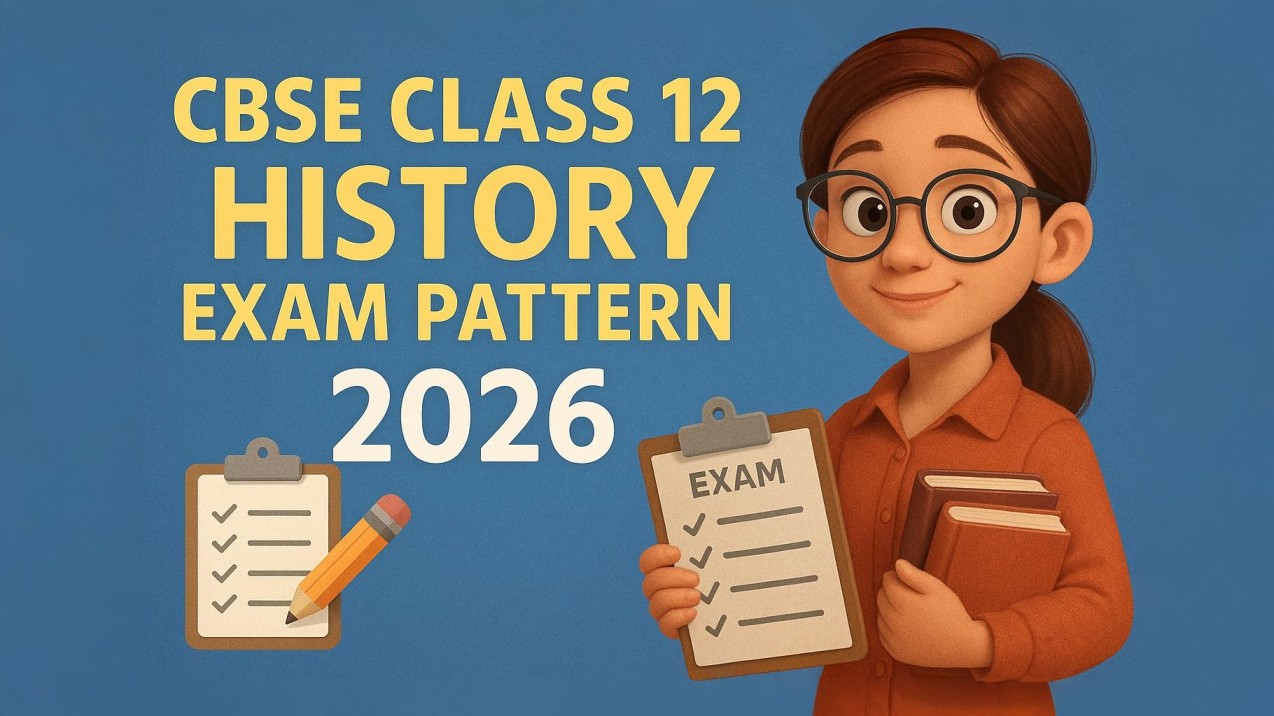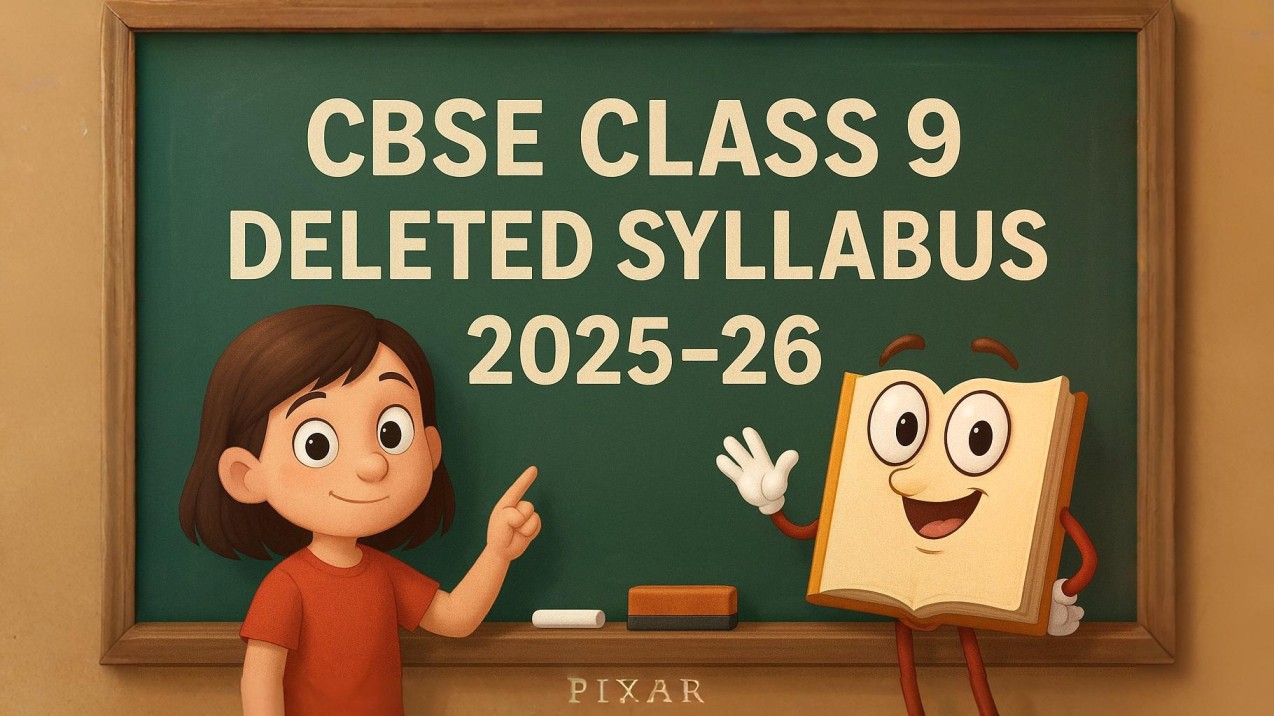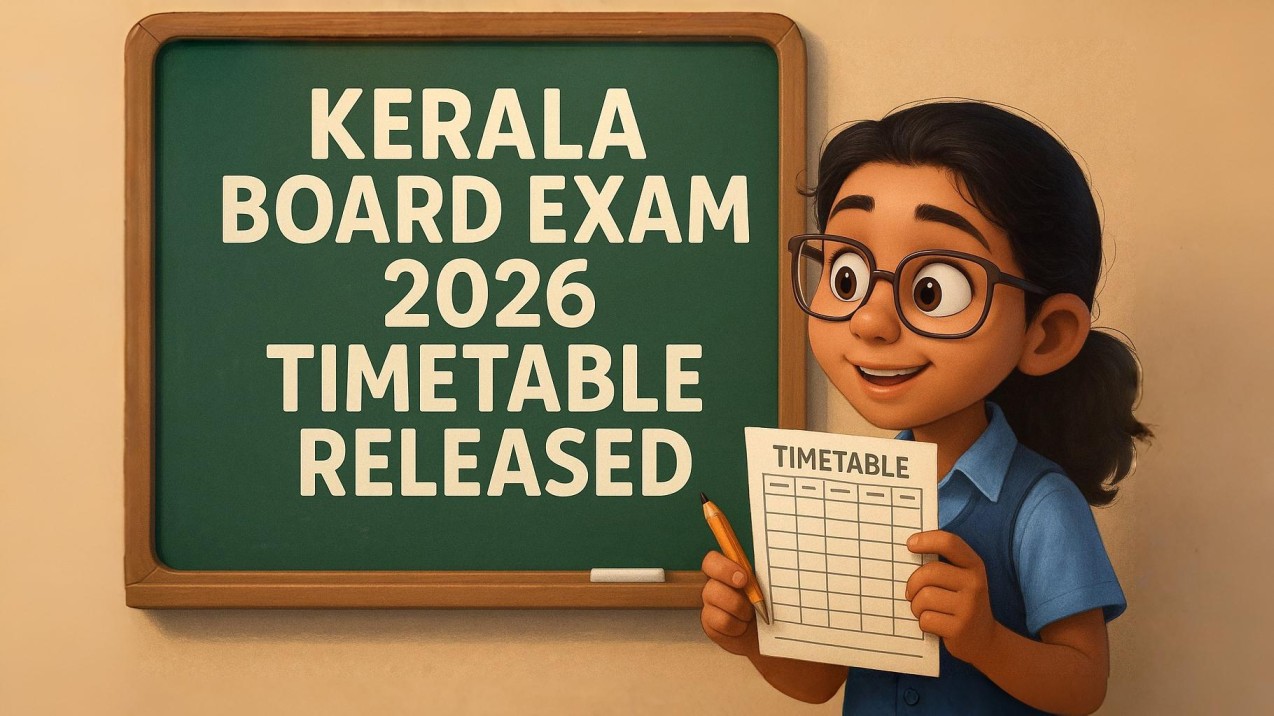Loading advertisement...
12-11-2025

The CBSE Class 12 History Exam 2026 will be one of the most important milestones for Humanities students. With the Central Board of Secondary Education (CBSE) revamping the question paper design for 2025-26, students can expect a higher share of competency-based and source-based questions, demanding a deeper conceptual understanding of Indian history.
This new exam format aims to evaluate how well students can interpret sources, connect historical events, and explain their significance — not just memorize facts.
In this comprehensive guide, we’ll cover everything about the CBSE Class 12 History 2026 Exam Pattern, marking scheme, question types, and smart preparation tips to help you score top marks.
The History subject (Code 027) for CBSE Class 12 carries 100 marks, split into:
| Section Type | Marks Weightage | Question Type | Skills Tested |
|---|---|---|---|
| Multiple Choice / Objective | 20% (approx. 16 marks) | MCQs, one-word answers | Concept recall |
| Competency-Based / Source-Based | 50% (approx. 40 marks) | Case studies, passage-based | Analysis, interpretation |
| Short & Long Answer | 30% (approx. 24 marks) | 3-mark & 8-mark questions | Expression, reasoning |
| Map Work | 5 marks (part of 80) | Identification, plotting | Visual recall |
This is the biggest shift in the 2026 paper. Half of the exam will test real-world understanding through competency questions that require analyzing sources, comparing events, and connecting cause-effect relationships.
For example:
“Read the following extract on the Mughal administration and answer the questions below.”
These assess comprehension, critical thinking, and application — essential for achieving higher-order learning outcomes.
| Part | Title | Themes Covered | Weightage |
|---|---|---|---|
| Part I | Themes in Indian History – I | Harappan Civilization, Mauryan Empire, Early Societies | 25 Marks |
| Part II | Themes in Indian History – II | Bhakti-Sufi Movements, Mughal Empire, Agrarian Systems | 25 Marks |
| Part III | Themes in Indian History – III | Colonialism, Mahatma Gandhi & Nationalism, Partition & Independent India | 25 Marks |
| Map Work | – | Based on all 3 parts | 5 Marks |
Very Short Answer (VSA) / MCQs – 1 mark each
Short Answer Questions – 3 marks each
Source-Based / Case-Based Questions – 4 marks each
Long Answer Questions – 8 marks each
Map Work – 5 marks
| Question Type | No. of Questions (Approx.) | Marks per Question | Total Marks |
|---|---|---|---|
| MCQs | 20 | 1 | 20 |
| Short Answers | 6 | 3 | 18 |
| Source-Based | 3 | 4 | 12 |
| Long Answers | 3 | 8 | 24 |
| Map Work | 1 | 5 | 5 |
| Total | – | – | 80 Marks |
Under the National Education Policy (NEP) 2020, CBSE has redesigned assessments to include critical thinking, problem-solving, and analytical ability. For History, this means:
This encourages students to “think like historians” — connecting evidence, drawing conclusions, and expressing them clearly.
1. Study NCERT Textbooks Thoroughly
2. Practise Source-Based Questions Daily
3. Master the 8-Mark Questions
4. Create Timeline Charts
5. Don’t Ignore Map Work
6. Attempt CBSE Sample Papers & Previous Years’ Papers
7. Focus on Writing Clarity & Presentation
| Resource | Use |
|---|---|
| NCERT Books (Themes I-III) | Core content, maps & sources |
| CBSE Sample Paper 2026 | Practice paper pattern |
| Oswaal / Educart Question Banks | Chapter-wise questions |
| YouTube Revision Lectures | Visual recall of timelines & maps |
| Class Notes | Summarized facts for quick revision |
Q1. What is the total marks of CBSE History 2026 theory paper?
A1. The theory paper carries 80 marks, with 20 marks reserved for internal/project assessment.
Q2. What percentage of competency-based questions will appear in 2026?
A2. About 50% of the questions will be competency-based, including source and case studies.
Q3. How can I score full marks in long-answer questions?
A3. Write in structured points, avoid repetition, and include relevant dates, examples, and historians’ viewpoints.
Q4. Are there any changes in syllabus for 2025-26?
A4. The overall themes remain same, but question design focuses more on analysis and less on rote memory.
Q5. Where can I download sample papers?
A5. Visit cbse.gov.in or trusted portals like JagranJosh, Interval Edu, and HSSLIVE.
The CBSE Class 12 History Exam Pattern 2026 marks a shift from factual recall to analytical excellence. Success will depend on:
With consistent practice, time management, and smart revision strategies, you can score 90+ in History and boost your overall CBSE percentage.
✅Stay connected with Skool Guru for more educational tips, exam strategies, and academic guidance.
📞 Need help? Contact our mentors today!
Visit: www.skoolguru.in



